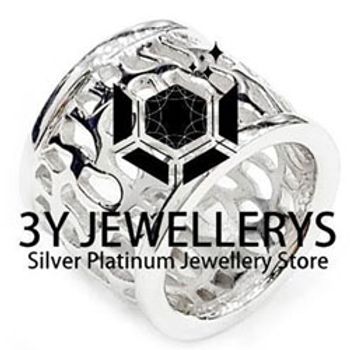What is Cubic Zirconia (CZ)
Cubic Zirconia or CZ, contrary to public belief, can be found in the natural world in countries like Burma or Thailand but it is extremely rare. CZ was first discovered in 1937 by two German mineralogists in very minute quantities, it wasn't a significant find so soon forgotten.
CZ was first produced artificially in the 1960's in France by Y Roulin and R Collongues, the process they developed was named "Cold Crucible" but this process only produced small crystals of CZ.
Then in the early 1970's, Russian scientists began to create cubic zirconia under laboratory conditions for industrial use and space technology, but it was not used for jewellery purposes. They perfected the "Cold Crucible" process and renamed it "Skull Crucible" due to the shape of the CZ crystals produced. Because of CZ's similarities to mineral gemstones it wasn't long before attention was focused on the jewellery possibilities of this new man made material and its startling similarities to mined diamonds. Virtually all cubic zirconia used in jewellery purposes is artificially created or man made as natural CZ is so rare and should not be confused with the mineral Zircon.
Technical Cubic Zirconia Information
Cubic Zirconia is an oxide of the metallic element - Zirconium (ZrO2). In the coloured forms of CZ, oxides of other metals such as copper, iron, nickel and many others are added in varying degrees to create a stunning spectrum of colours.
CZ is generally an amalgamation of approx 87% zirconium oxide and 13% yttrium oxide although slightly different compounds are used all over the world.
The quality of the stone is usually influenced by the high heat induced formation process and by the type and quantity of the stabilizing material that's needed to "bond" the cubic zirconia atoms after the cooling period.
Cubic Zirconia Comparisons
Cubic zirconia is fairly hard and is harder than quartz gemstones such as amethyst, but is softer than topaz ruby and sapphire. It is of course softer than a diamond which achieves a 10 on the Moh's scale.
CZ scores an impressive 8.5 on the Moh's scale which is considerably higher than most semi precious stones. CZ's best properties are its light (optical properties) and its lower cost, enabling everyone to enjoy the appearance of mined diamonds at an affordable price.
To the untrained eye, cz looks identical to diamond and can fool even some of the most knowledgeable experts as most of the differences can only be detected under a microscope.
The most common way to tell the difference between a CZ and a diamond is the weight, a CZ nearly weighs twice (1.7 times) as much as a diamond.
Cubic zirconia is not the same as the natural mineral "zircon". Zircon (ZrSiO4) is another rare mineral that is also used as an artificial diamond in jewellery as zircon also closely resembles a diamond in lustre.
Synthetic Mossanite is a newly created gemstone that is made from cultivated material and this new gemstone even out performs cubic zirconia as a diamond stimulant.
